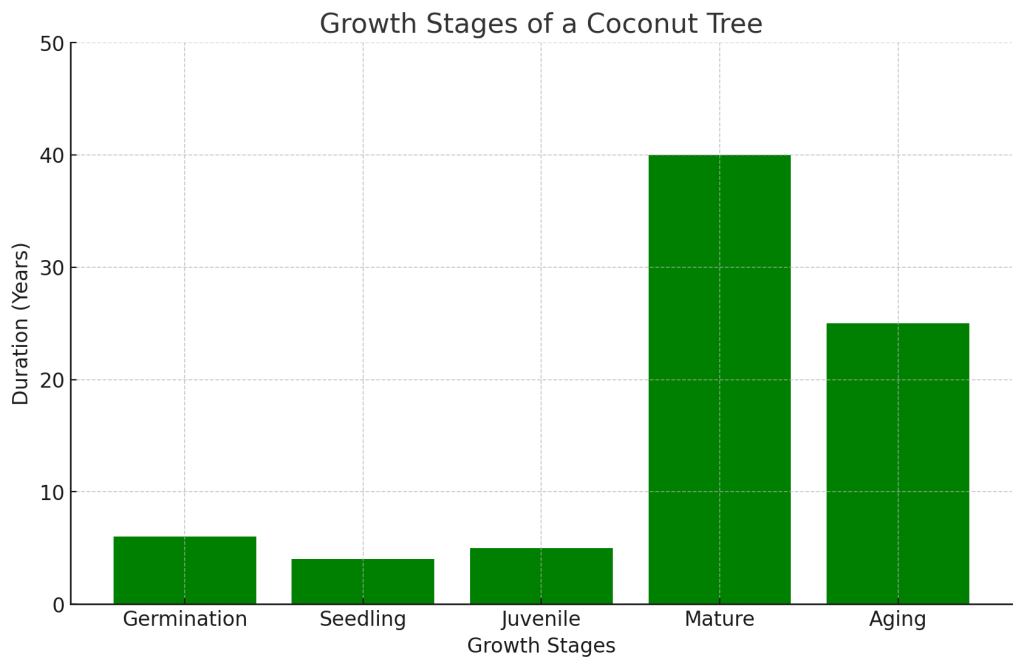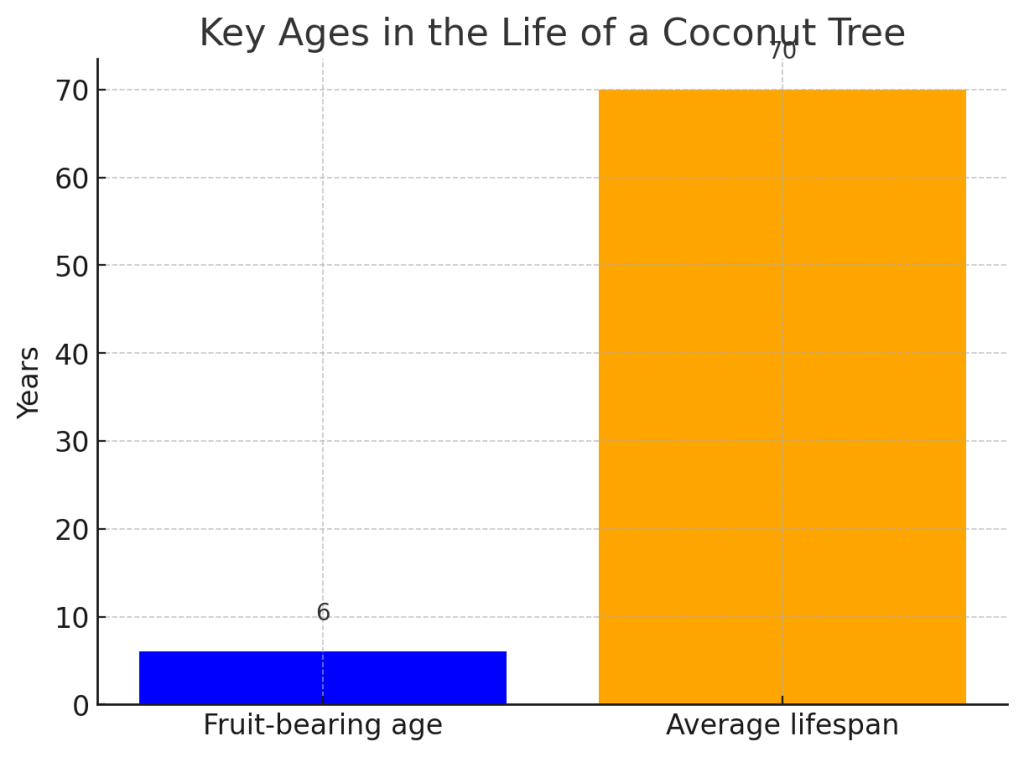What Does a Coconut Tree Look Like?
Key Takeaways Table:
| Key Point | Description |
|---|---|
| Physical Appearance | Tall, slender trunk with green, feathery fronds |
| Height | Can grow up to 30 meters |
| Coconuts | Grow in clusters at the base of the fronds |
| Habitat | Prefers tropical, sandy soil near the ocean |
| Lifespan | Can live for 60-80 years |
Coconut trees, known for their distinctive and elegant appearance, are a symbol of tropical beauty. These trees have several unique characteristics that make them stand out in the lush landscape of tropical regions.
Understanding the Aesthetics of Coconut Trees
Physical Characteristics:
- Trunk: The trunk of a coconut tree is tall and slender, often slightly curved or leaning. It’s smooth and has a grayish-brown texture.
- Fronds: At the top of the trunk, you’ll find a cluster of large, feathery fronds. These green fronds can be up to 4-6 meters long.
- Coconuts: The coconuts themselves grow in clusters at the base of the fronds. They start off green and turn brown as they mature, surrounded by a fibrous husk.
Growth and Habitat:
- Height: These trees can reach impressive heights, often growing up to 30 meters (98 feet).
- Soil Preference: Coconut trees thrive in sandy soil and are commonly found along coastlines. They prefer a sunny, tropical climate and are salt-tolerant.
- Watering: They need a good amount of water but also require well-drained soil.


The Significance of Coconut Trees
Coconut trees are not just visually pleasing; they play a crucial role in the ecosystems where they grow. They are also an essential resource for local economies.
- Ecological Impact: The trees provide habitat and food for various wildlife species.
- Economic Importance: Coconuts are a versatile fruit used in everything from culinary delights to beauty products. The wood of the tree is also valuable for construction and furniture.
For a deeper dive into the uses of coconuts, particularly in culinary contexts, check out our article on Cream of Coconut, which offers a comprehensive look at this delicious ingredient.
Lifecycle and Cultural Significance of Coconut Trees
Lifecycle of a Coconut Tree:
- Germination: The life of a coconut tree begins when the coconut, which is actually a seed, germinates. This process can take anywhere from 3-6 months.
- Growth Phase: After sprouting, the tree grows relatively fast, reaching fruit-bearing maturity in about 6-10 years.
- Longevity: A healthy coconut tree can live and produce fruit for 60-80 years, making it a long-term resource for communities.
Cultural Impact:
- Symbolism: In many cultures, especially in the tropics, the coconut tree is a symbol of life and prosperity. It’s often featured in folklore and rituals.
- Versatility: Every part of the tree is used – from the leaves to the roots, demonstrating the resourcefulness of the communities that depend on it.
Tips for Spotting Coconut Trees
If you’re traveling to a tropical region and want to spot these majestic trees, here are some tips:
- Look Near the Coast: Coconut trees love the beach! They’re often found lining the shores.
- Observe the Trunk: The unique, slender, and often curved trunk is a dead giveaway.
- Check the Top: Look for the characteristic cluster of large, green fronds and the hanging coconuts.
Conclusion
Coconut trees are more than just a picturesque element of tropical landscapes. They are a vital resource and hold significant cultural value in the regions they grow. Understanding their characteristics, lifecycle, and impact can enrich your appreciation of these magnificent trees.

